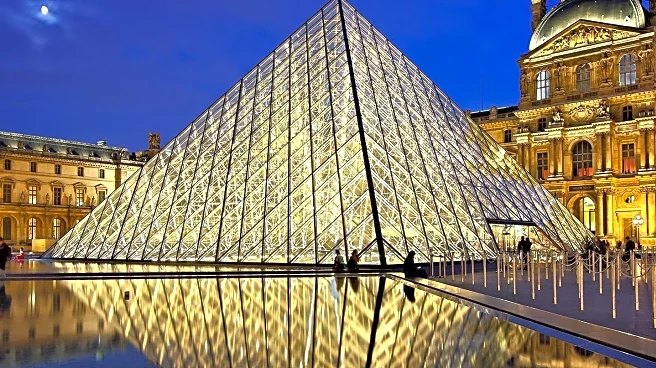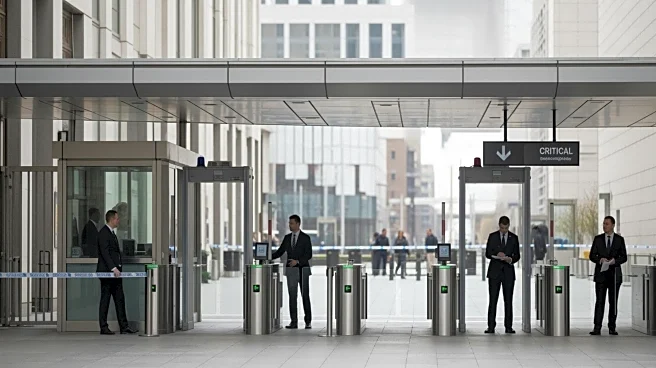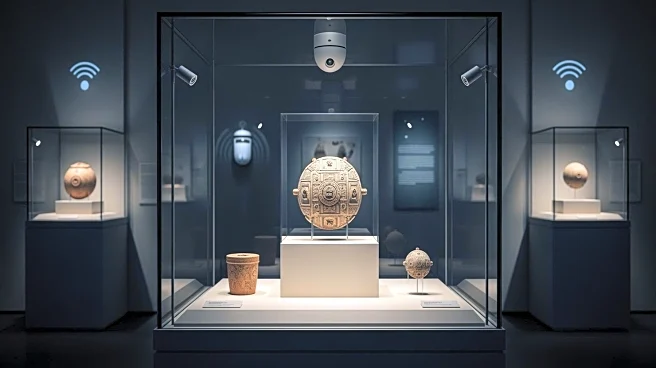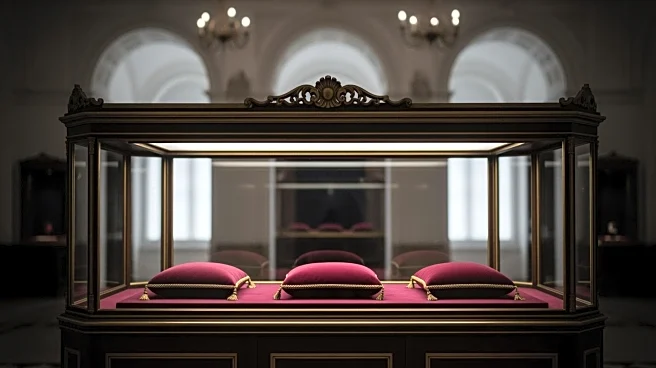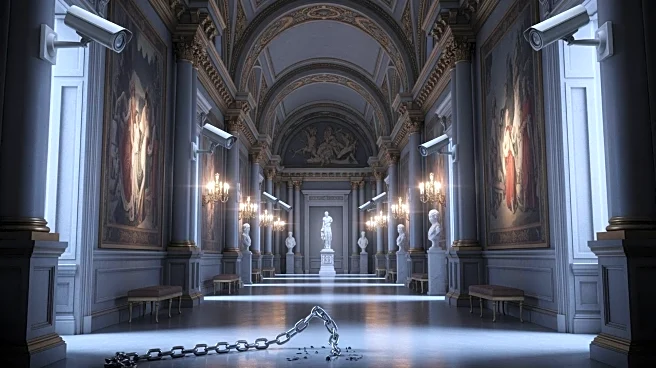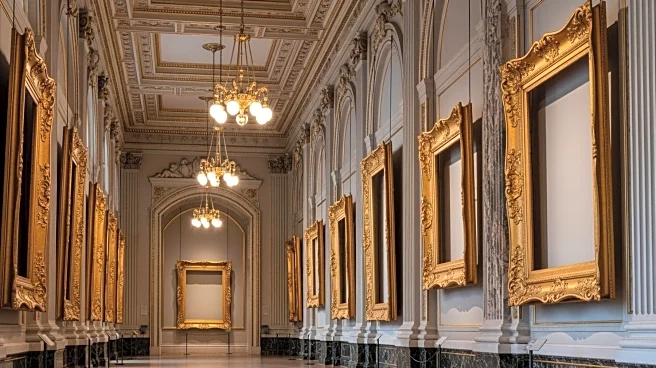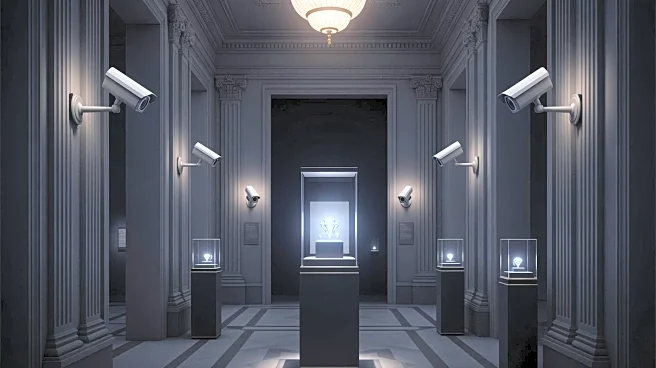What's Happening?
French museums have experienced a series of thefts over the past year, raising concerns about the security of cultural institutions in the country. The most recent incident involved the theft of 18th- and 19th-century coins from the Maison des Lumières
in Landres, valued at €90,000 ($105,000). This follows a high-profile heist at the Louvre, where thieves stole France's crown jewels worth €88 million ($102 million). Other incidents include the theft of natural gold from the National History Museum in Paris and porcelain works from the Adrien Dubouché National Museum. Authorities are investigating whether these thefts are connected, with some suggesting a possible criminal network targeting these institutions.
Why It's Important?
The spate of thefts from French museums highlights vulnerabilities in the security of cultural institutions, which could have broader implications for the preservation of national heritage. These incidents not only represent significant financial losses but also threaten the cultural and historical artifacts that are part of France's national identity. The thefts could lead to increased security measures and insurance costs for museums, potentially affecting their operations and public access. Additionally, the international art market may be impacted, as stolen items could surface in illicit trade, complicating efforts to recover them.
What's Next?
French authorities are intensifying investigations to determine if the thefts are linked and to apprehend those responsible. Museums may need to reassess and enhance their security protocols to prevent future incidents. The cultural sector, including museum directors and government officials, is likely to engage in discussions on how to better protect valuable artifacts. There may also be increased collaboration with international law enforcement to track and recover stolen items, as well as efforts to raise public awareness about the importance of safeguarding cultural heritage.
Beyond the Headlines
The recent thefts raise ethical questions about the responsibility of museums to protect cultural artifacts and the role of private collectors in potentially fueling demand for stolen goods. There is also a cultural dimension, as these incidents threaten the accessibility of historical artifacts to the public, which is essential for education and cultural appreciation. Long-term, these events could lead to a reevaluation of how cultural institutions balance public access with security needs.
